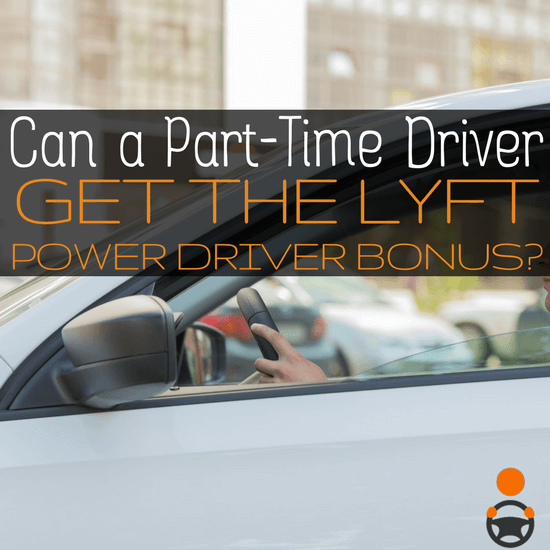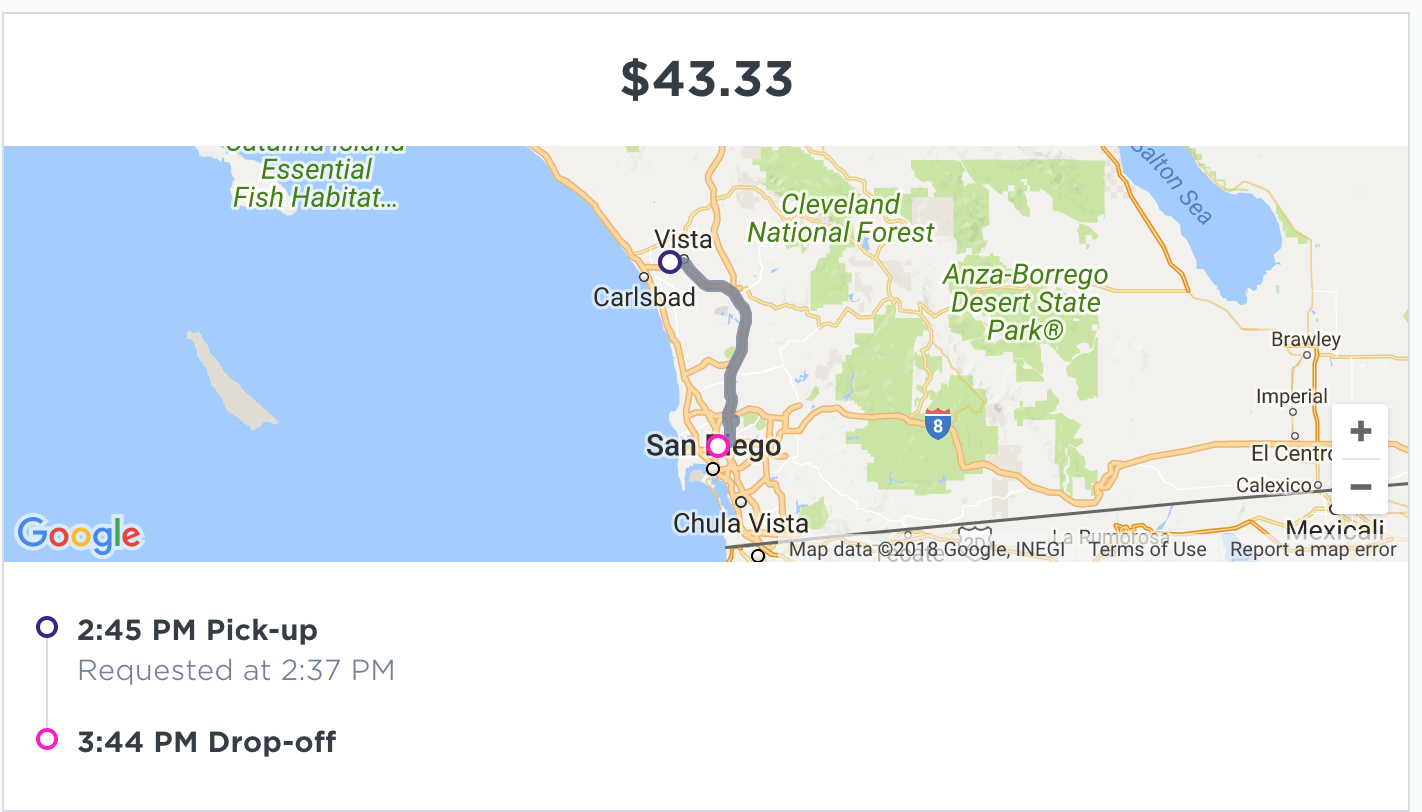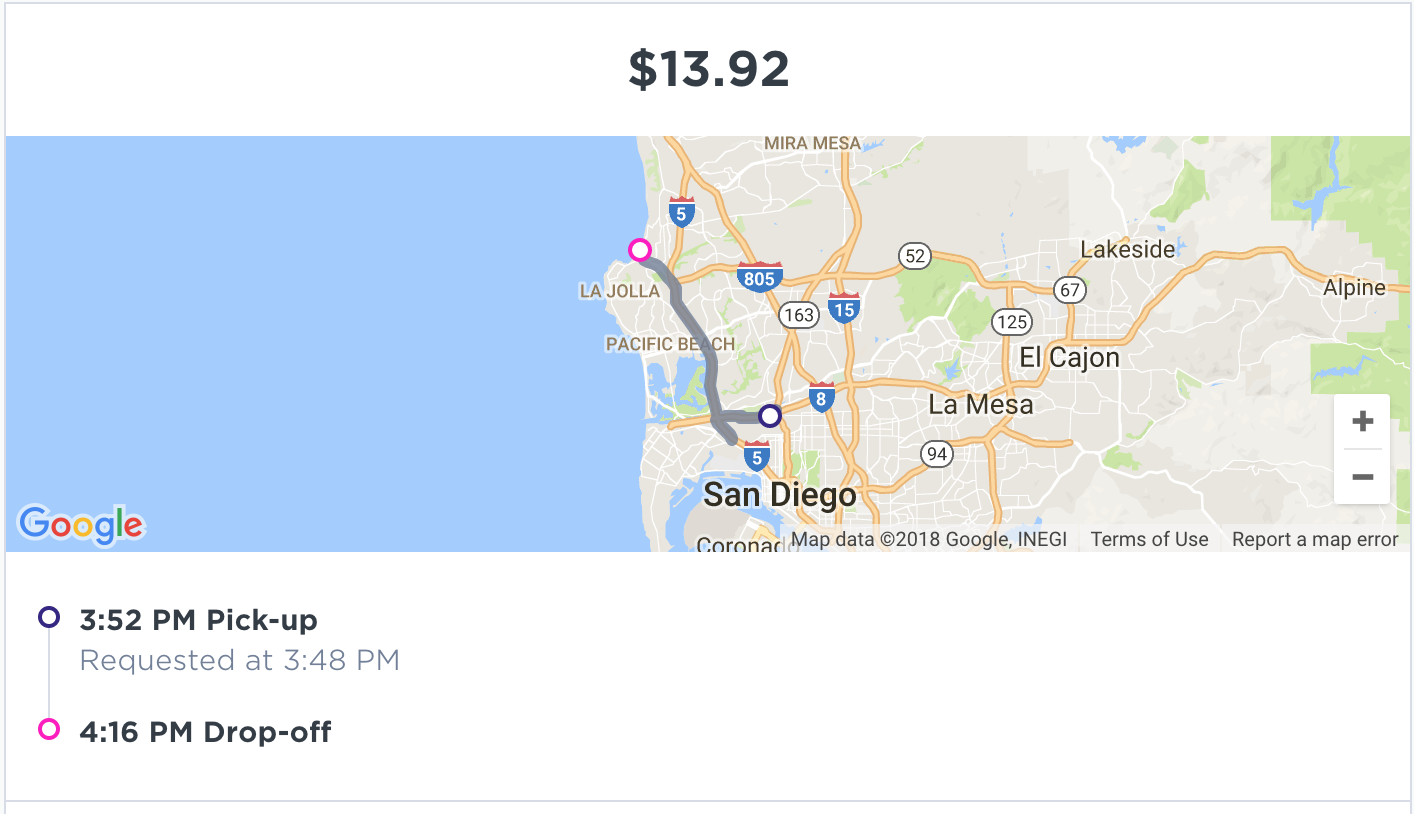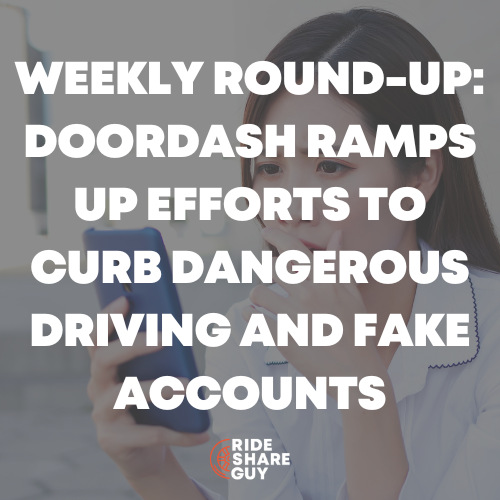In some markets, driving to get Lyft’s Power Driver Bonus (PDB) is a good strategy to earn more. But does it work in all markets, and would it work for part-time drivers? Senior RSG contributor Will Preston outlines his strategy to get the Lyft PDB as a part-time driver in a medium-sized market.
As a part-time rideshare driver who drives for both Uber and Lyft, I have always found Lyft’s Power Driver Bonus to be out of reach. I never even got close to some of the metrics needed to qualify, so I never even considered it. However, as Lyft’s popularity appears to increasing, particularly among the younger crowd, I decided to try to qualify for the bonus one weekend and see what happens.

Uber has taken quite the PR hit in the last year or so. Sexual harassment charges, a taxi strike leading to #deleteuber, losing some big legal cases, being completely shut down in some places, and even the ousting of the bigger-than-life CEO, Travis Kalanick. These things coupled with increased marketing by Lyft seem to have an effect. My personal Lyft percentage went from 10% to 25-30%, depending on the weekend.
Lyft passengers tip more than Uber passengers, and Lyft pays regular Lyft rates for Lyft Line rides. Lyft rides can also be a little more fun than Uber rides. Lyft passengers tend to sit up front and talk to you, versus Uber passengers that treat it more like a taxi or chauffeur. They sit and back and sometimes say nothing. There’s also a social activism aspect. Driving Lyft only could make me part of #deleteuber. I could be one of the cool kids.
But in the end, I’m not driving drunks around for fun or to be cool. I’m doing it for money. Would I make more money driving just for Lyft? Would the better rates on Lyft Line and the increased tipping make up for the fact that Uber is still the king of the rideshare mountain? What if I hit the Power Driver bonus? Would I make even more?
Related article: How Uber drivers are making hundreds of extra dollars per month
My First Night Rocked
I live 40 miles north of San Diego, so well outside the hot zones for Uber and Lyft. When I started driving, I turned on a destination filter for San Diego, like I normally do. Given the reputation (bad) of Lyft destination filters, I was quite surprised when I got a ping five minutes after turning on my filter! And the ride was going all the way to the heart of one of the busiest parts of San Diego! I’d be within a few miles of several of my favorite hot zones. To top it off, I was starting my shift with $43.33 in my pocket!

This ride also put me right where I wanted to be at the right time. I was in the heart of things just before dinner time. Four minutes later I got another ride that was 12.9 miles and put me in La Jolla at 4:16 PM. Uber surges in La Jolla almost every day around that time.

Within a few minutes I got another pickup from La Jolla to the airport. It was a decent-length ride, it was in a 20% Power Zone — essentially a guaranteed 1.2X “surge” rate — and the customer gave me a $12 tip! (More on why that happened later.)

I was leaving the airport when I got a ping to return to the airport, so I looped around and waited at the pickup spot for Terminal 2 for three separate Lyft Line passengers. One cancelled as soon as they realized it was a Lyft Line. The other two were in the wrong place and I had to direct them where to go. They finally showed up and we started heading toward their destination.
We were a little over 2 miles from the airport when my phone rang. My previous passenger left their phone in my car and their flight was leaving in 30 minutes. They asked if there was any way I could come back to the airport with their phone. The other two passengers heard what was happening and they said they were fine with me doing that. Mind you, this is two unrelated people both agreeing that it was okay to delay their drop off by 10-15 minutes so these other people could get their phone. Nice guys!
We circled back to the airport and found the people standing where I dropped them off. We handed them their phone, and they handed me $25. Then they added $12 more dollars in a tip. Weird amount, but still better than nothing.
After dropping off the two passengers, I realized I got paid for that entire trip, including the loop back to the airport that added over five miles to my trip. What would have been a $6-8 fare ended up being $14.41. (If you look closely, you can see me looping back to the airport.)

At this point I had been driving for a little over three hours and had well over $100 in my pocket. Had I been judging Lyft wrong all this time? I was only waiting a few minutes for each ride, and each ride had been more than profitable, with short drives to pick them up and long rides after picking them up.
The Wheels Start Shaking
The wheels don’t come off the bus just yet, but they definitely start shaking. Wait times for my next ride started getting longer, pickups were farther away, and the rides themselves were shorter. Only two of the remaining 9 rides that night were over $10, and more than half of them were under $5.
The worst part was when I took my usual dinner break. Once I finished my meal about 9:30 PM, I couldn’t get a ride! I waited well over an hour before I got my next ride. After another hour or so of short rides with long wait times between them, I decided to head north for my usual Encinitas bar runs. I didn’t put on a destination filter and started driving North. Even without a filter, I drove from Pacific Beach to Encinitas without a ride.
I got a ride from Encinitas into Oceanside, and then got another from Oceanside into Vista. It wasn’t until I was writing this article that I noticed the last one was over 14 miles and only paid me $4.29! The good news is that I got right into Lyft phone support. She looked at my ride, concluded that I was right, and resubmitted the ride. The ride went from being $4.29 to $19.72!
I asked her why this happened, and she said it appeared I had some kind of connectivity issue. If you look at the map below, you can see parts where I was not on a road. More on this connectivity issue later.
Related article: Essential gear every rideshare driver should have

By the end of the first night I was feeling pretty good. I made about $200, including the cash tip and the adjustment I just mentioned. Money-wise, this was very similar to a typical Uber night. Perhaps I had misjudged Lyft.


I was also making good progress towards the Power Driver bonus. I was more than half the way through the total rides and peak rides I needed to qualify for the first bonus of $25. There was no I was going to be able to qualify for 60 rides or the $425 weekly guarantee driving just Friday and Saturday night. But maybe I could make it to that $25 bonus if I concentrated.
The Wheels Fall Off the Bus
By comparison, the next night was a disaster. I did not get a match on the way down to San Diego, and I kept having large swathes of time without a ride.
Five hours later, I was still “close, but no cigar.” The hardest part was getting the required Peak Rides, as there were only a few peak hours left. Around 10 p.m., I needed one more ride to hit the Total Rides number, but four more to hit the Peak Rides number.
I knew what I needed to do. I drove up to the stomping grounds that I know so well: the bar crowd in Encinitas. I know right where to sit (on Uber at least), and all the bars are within a five minute driving time. I should have no problem getting four more rides in the three hours left. I got a ride in the first few minutes, and I started feeling like I would make it.
Then… crickets. Lyft Crickets, anyway. There were Uber rides left and right. I saw a Lyft only driver a few slots down and went to talk to them. I asked her if this is normal for this time at this place. She said, “You know… Uber’s been around a lot longer, so…” So, Yes. This was normal for Lyft drivers. Wow.
Two and a half hours later, I was no closer to my goal. I headed home at 1:30 a.m., after making only $77 for the entire night – roughly half what I made the night before.
I didn’t make the bonus, and I didn’t make what anywhere near what I would normally make when driving for both services for a weekend.

What Went Wrong?
First and foremost, Lyft just isn’t where Uber is – at least in my market. I’ve actually heard of markets where Lyft is ahead, but San Diego isn’t one of them.
I averaged just over 1 hour per ride for 20 hours. This is reminiscent of when I was trying for the Lyft Hourly Guarantee. To qualify for the hourly minimum, I needed to get at least one ride per hour inside a hot zone. How hard can it be to get at least one ride in Little Italy, Hillcrest, or North Park?
Turns out, it can actually be quite hard. I remember multiple hours where I would sit in the heart of things at 10 p.m. on a Friday or Saturday night, and not get a single call during that hour. Meanwhile, I know I could have done a few Uber rides no problem.
I also think driver saturation is a problem. There are a lot of disgruntled Uber drivers who have decided that Lyft is better, and so they’re going to drive only for Lyft. In the San Diego market, Lyft’s bonuses are more predictable as well. My personal opinion is that more drivers than passengers are leaving Uber for Lyft, leading to a greater driver saturation problem.
When I started having problems, I wondered if it was a neighborhood thing. Lyft is a younger, hipper app, and Lyft is also very popular in the gay community. So I situated myself right in the middle of San Diego’s long-standing gay-friendly area, Hillcrest, to no avail. I had no more success there than anywhere else.
I also believe there is a connectivity issue with the Lyft app that I simply don’t have with Uber. The first example of that was the ride I mentioned earlier, where it showed me going offline during the ride, causing my fare to be messed up. The second example of this was that Lyft showed me online for only 16 hours that weekend, when I know it was in excess of 20 hours. It’s hard to get a ride request when Lyft doesn’t know where you are.
I talked to Lyft support about this, and they gave me some nonsense about my phone being slow because of too many apps, and being in bad connectivity areas. Only Uber, Lyft, and Waze are allowed to do background processing. I’m rarely in what I would call a bad connectivity area, and the times I get the message that I’ve lost contact with the Lyft system, I know I wasn’t.
How to Maximize Your Earnings with Lyft’s PDB
Overall, I ended up making $12 per hour. It’s definitely not on par with with the $20 per hour I make driving for Uber & Lyft together, but your results may vary. There are a few things to keep in mind when you’re pursuing Lyft’s Power Driver Bonus, and these tips may help you earn more in a shorter amount of time.
- Know your market. In San Diego, oddly enough, Lyft just isn’t as popular as Uber. As you can see by my results (on a weekend!), even busy nightlife might not get you the Lyft PDB. In San Diego, 80% of my pay comes from Uber and only 20% from Lyft. On the other hand, if you know Lyft is more popular in your area than Uber, the Lyft PDB might be attainable for you.
- Try to go out when other drivers aren’t out. Okay, so this can be hard, especially on the weekends. But take a listen to this podcast episode with Adan Castillo – he has some really good advice about paying attention to smaller events, the ones that aren’t on everyone’s radar. Those can be money-makers.
- Double check your app connectivity. It might sound strange, but make sure your rides are showing up and you’re getting paid! You don’t want to end the night, assuming you’ve got the Lyft PDB only to wake up and find out Lyft didn’t calculate a ride.
- Drive for both Uber and Lyft. This one should be obvious, but if you use an app like Mystro, even if only 10% of your rides happen on Lyft, you can pick and choose the best rides.
What tips do you have to earn more with Lyft’s Power Driver Bonus?
-Will @ RSG




